Community Tip - Need to share some code when posting a question or reply? Make sure to use the "Insert code sample" menu option. Learn more! X
- Community
- Creo+ and Creo Parametric
- 3D Part & Assembly Design
- Flexible Hinge Part
- Subscribe to RSS Feed
- Mark Topic as New
- Mark Topic as Read
- Float this Topic for Current User
- Bookmark
- Subscribe
- Mute
- Printer Friendly Page
Flexible Hinge Part
- Mark as New
- Bookmark
- Subscribe
- Mute
- Subscribe to RSS Feed
- Permalink
- Notify Moderator
Flexible Hinge Part
We are experimenting with the usage of Flexible Parts in house recently, and trying to build a use case for utilizing this functionality instead of creating an assembly or many instances to essentially call out the same part in various positions (specifically a door hinge in this use case).
First off, I've tried utilizing a crude sketch to help control the position of the legs on the hinge as simply as possible. I left one leg essentially fixed and locked to a datum, then have the other one rotating off center from that one. Easy enough. I then modeled simply, and set the part to be flexible. Again, simple.
I have modeled this part in to both Creo 3.0 and 4.0, and essentially get the same result once i model this into an assembly. We like to set up some of our assemblies with mechanism's to test for clearances and such, so in a crude example, I modeled two place that will pivot using this "flexible" hinge. I modeled in the first place as fixed, and the second on a pin, then modeled in the hinge with its angle set to be the angle between the two plates. Now as i start to drag the moving part around, the hinge acts as expected as shown below in various positions.
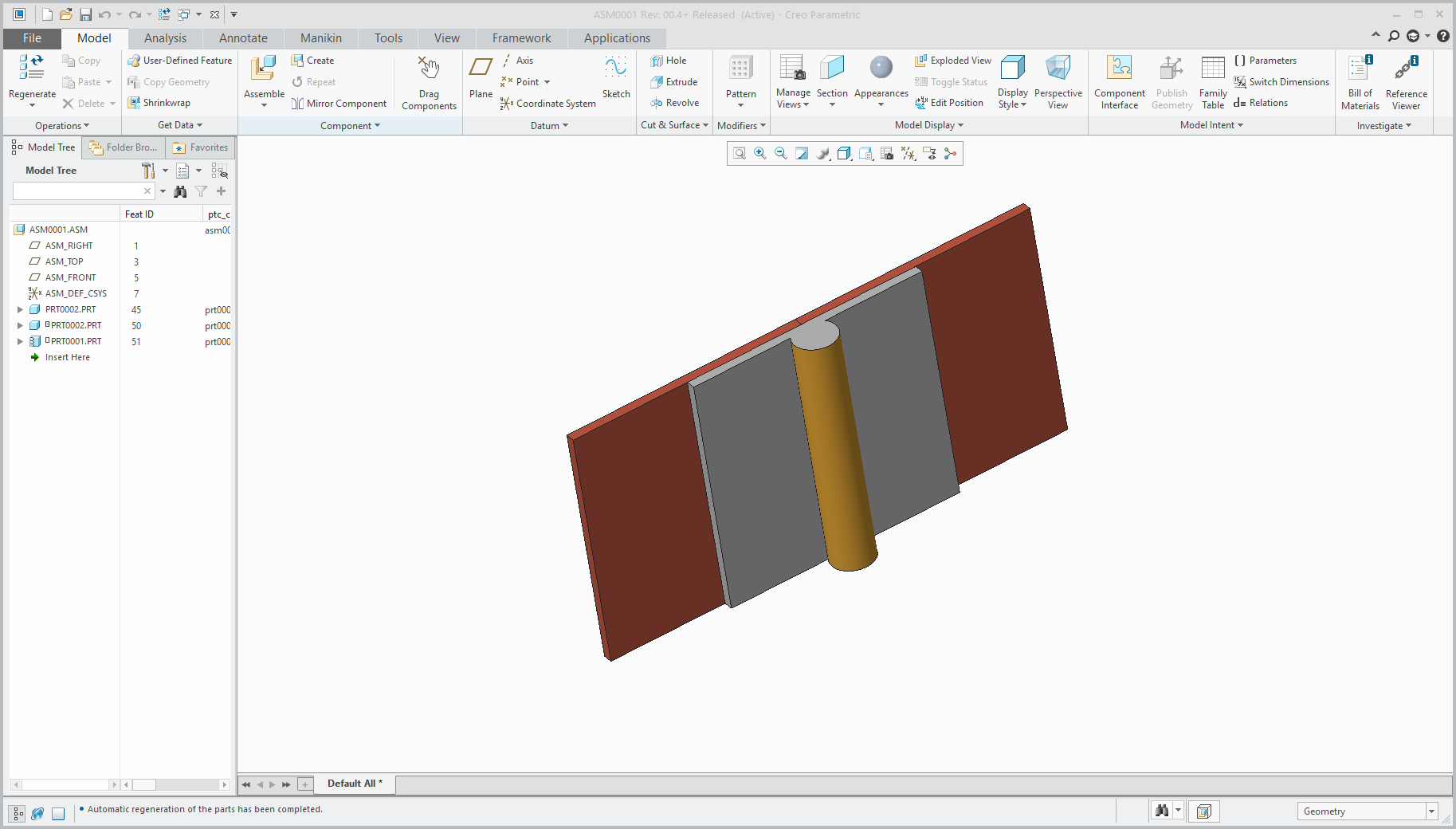

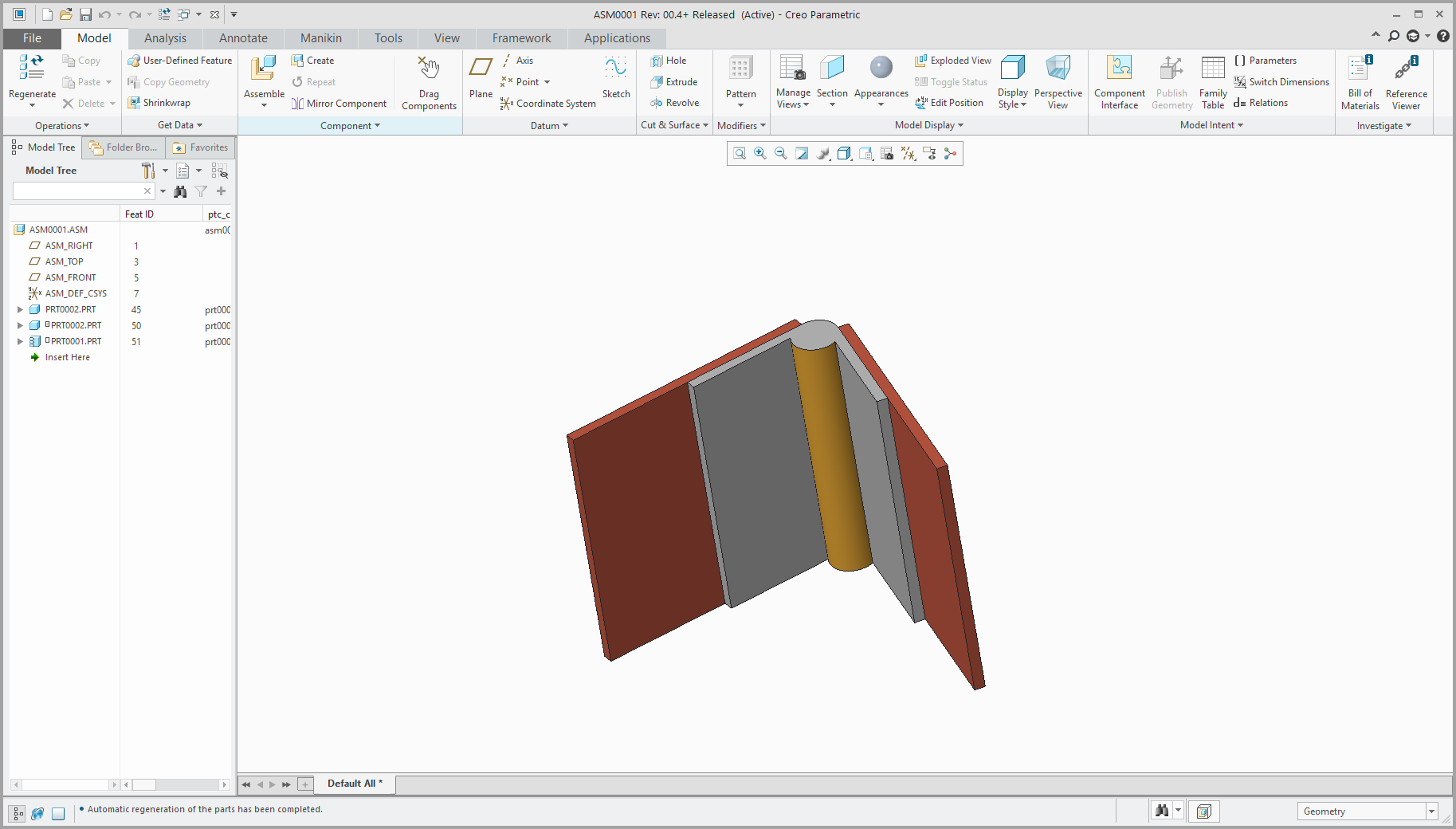
Then at some point, it hits a threshold, and it starts to flip about its axis. The mating surface remains parallel to where i need it to be, but obviously needs to flip 180 degrees.

Has anyone else experienced this issue? I have tried modeling this in many different ways and the result is always the same, even when I start to insert a large and detailed datum structure. Is there anything I can do to model this differently to prevent this from happening? Or does this appear to be a bug in both versions of Creo?
I have attached images and the files to this request.
Additionally, is there a way to set limits on the flexible hinge model to prevent it from opening or closing too far? Reason I ask is that I plan to make a Gas Shock next, and would like it to only be able to work for certain limits. Same would apply for this hinge where it can go past the flat by a little, but eventually it will/can move to an impossible position.
Any help or assistance would be greatly appreciated.
Solved! Go to Solution.
- Labels:
-
Assembly Design
Accepted Solutions
- Mark as New
- Bookmark
- Subscribe
- Mute
- Subscribe to RSS Feed
- Permalink
- Notify Moderator
Mike is right. You will forever be fighting sketcher. It doesn't allow 0 degrees and it will flip over at random values. You should build the moveable portion of the hinge with a coordinate system and rotate that instead. Just define the csys angle as your flexible dimension.
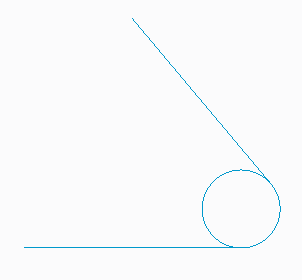
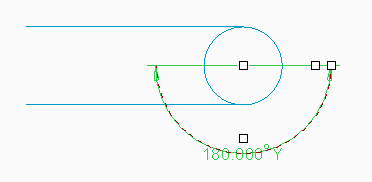



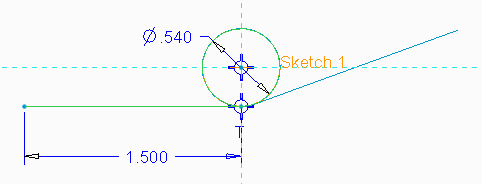

- Mark as New
- Bookmark
- Subscribe
- Mute
- Subscribe to RSS Feed
- Permalink
- Notify Moderator
Randy,
It's something in your Sketch feature. The angle can be modified up to 118.5 degrees before the behavior you described occurs. Think it might be something to do with the tangency of the line to the circle. It's just a guess - I've been using Flexible components for a long time and can't say that I've run into this problem before. Perhaps tying the straight line to a sketch point that moves along the circle, or maybe a second centerline that controls the angle?
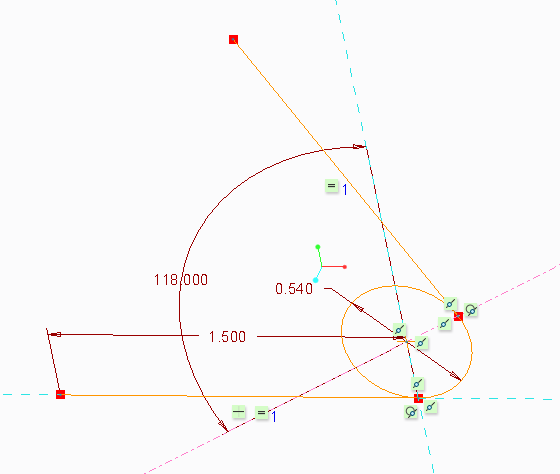

- Mark as New
- Bookmark
- Subscribe
- Mute
- Subscribe to RSS Feed
- Permalink
- Notify Moderator
Mike is right. You will forever be fighting sketcher. It doesn't allow 0 degrees and it will flip over at random values. You should build the moveable portion of the hinge with a coordinate system and rotate that instead. Just define the csys angle as your flexible dimension.







- Mark as New
- Bookmark
- Subscribe
- Mute
- Subscribe to RSS Feed
- Permalink
- Notify Moderator
Tangency is one of the most problematic constraints because there are often multiple solutions.
I would create two sketches. One for one leaf with the circle and an axis point. The second with an embedded datum plane through the axis at an angle to the default datums and used as a horizontal reference, so the second leaf is horizontal and parallel to the datum plane. This limits the potential for alternative solutions because the second leaf doesn't move within its sketch.
With Pro/Program you could have a datum curve feature with warning text be resumed when the item is used out-of-limits. You could try relations that override dimensional changes but it can leave users mystified when the changes they ask for fail to happen.





